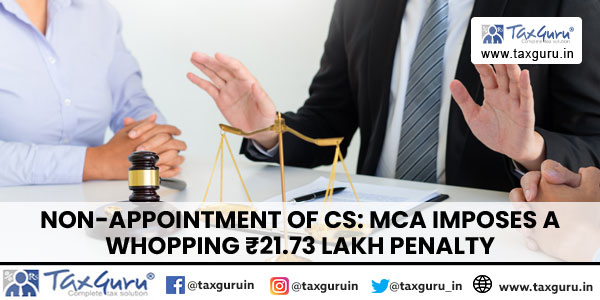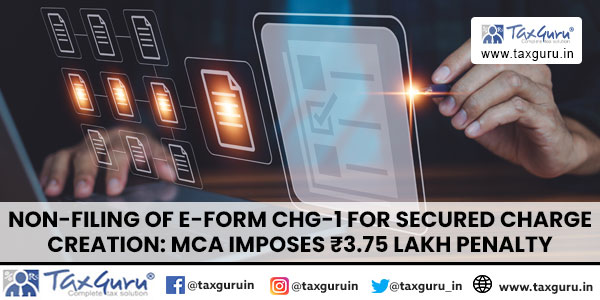Dear Readers for basic understanding kindly refer my article titled “CBCR – WHY SUCH REPORTING, BY WHOM, WHEN, WHAT ARE THE DIFFICULTIES AND BENEFITS”. In this article you will find detailed analysis of certain terms and issues which either OECD or certain other countries have clarified.
Notification in respect of BEPS Action plan 13 is expected shortly from CBDT. However the terms which have already been defined by OECD will not be changed to a greater extent by CBDT. Thus we all should be pro-active in respect of these requirements as these documentation requires a lot of data because of which various enterprises have already completed a trial run in previous year and those who are yet to start should start immediately.
Q:- What is Master File?
A:- The master file should provide an high-level overview of the MNE (Multinational enterprises’’) group business, including the nature of its global business operations, its overall transfer pricing policies, and its global allocation of income and economic activity in order to assist tax administrations in evaluating the presence of significant transfer pricing risk.
The information required in the master file provides a “blueprint” of the MNE group and contains relevant information that can be grouped into five categories:-
- MNE group’s organizational structure including geographies;
- description of the MNE’s business or businesses;
- MNE’s intangibles, overall strategy for development, ownership;
- MNE’s intercompany financial activities; and
- MNE’s financial and tax positions.
The master file is to be filed locally with tax authorities.
Q:- What is Local file?
A:- In contrast to the master file, which provides a high-level overview as described in paragraph 18 of Final Report on Action plan 13 issued by OECD which are mentioned in above Q, the local file provides more detailed information relating to specific intercompany transactions. The information required in the local file supplements the master file and helps to meet the objective of assuring that the taxpayer has complied with the arm’s length principle in its material transfer pricing positions affecting a specific jurisdiction. The local file focuses on information relevant to the transfer pricing analysis related to transactions taking place between a local country affiliate and associated enterprises in different countries and which are material in the context of the local country’s tax system. Such information would include relevant financial information regarding those specific transactions, a comparability analysis, and the selection and application of the most appropriate transfer pricing method. It also includes details of the key competitors.
The local file is to be filed locally.
If I talk from Indian perspective, most of the details are currently also required as per Rule 10D of the Income Tax Rules, 1962. However rule 10D does not requires all the details as prescribed by OECD hence an amendment in the rule is expected in respect of local file.
Q:- Will there be a concept of Materiality in Local file?
A:- OECD in its guidance has advised to have a materiality level which is to be set by individual countries based on their local conditions and other points. Each country considers materiality thresholds based on factors like size and nature of the economy, importance of the MNE group in the concerned economy and size and nature of the local operating entity.
Q:- What will be the frequency of updating the documents?
A:- OECD has recommended that where operation conditions remains unchanged, documents can be updated every 3 years however financial data should be updated annually.
Q: – Will there be any change in the format of CbCR as prescribed by OECD?
A:- OECD in its February, 2015 Guidance on the Implementation of Transfer Pricing Documentation and Country-by-Country Reporting has clarified that Jurisdictions should utilize the standard template contained in Annex III of Chapter V of the Transfer Pricing Guidelines, and included in the September Report. Stated otherwise, under this condition no jurisdiction will require that the CbC Report contain either additional information not contained in Annex III, nor will it fail to require reporting of information included in Annex III.
Hence it is not expected that format of CbC report shall be changed by CBDT.
Q:- Will there be any change in the format of Master file and Local file?
A:- OECD in its guidance has stated that master file and local file elements of the transfer pricing documentation standard be implemented through local country legislation or administrative procedures however OECD’s guidelines should be taken into account when introducing these elements in local country legislation or administrative procedures.
Q:- What if Ultimate Holding company of an Entity in India is not liable to file CbCR as per its Tax Jurisdiction laws?
A:- OECD in its guidelines has provided that Reporting Entity may be an entity other than Ultimate Holding Company in case where Ultimate Parent Entity of the MNE Group is not obligated to file a CBCR in its jurisdiction of tax residence. Hence in this case Indian Entity or any other entity of a particular tax jurisdiction where it is required to file CbCR can be appointed by MNE to file CbCR. Such an entity is considered “Surrogate Parent Entity”.
Q:- What communication is to be done by an Indian entity where Ultimate parent entity or Surrogate parent entity is resident of any other Tax Jurisdiction?
A:- OECD has clarified that where an entity of an MNE Group that is resident for tax purposes in India is not the Ultimate Parent Entity nor the Surrogate Parent Entity, it shall notify the [Country Tax Administration] of the identity and tax residence of the Reporting Entity, no later than [the last day of the Reporting Fiscal Year of such MNE Group].
Q:- Are extraordinary income and gain from investment activities be included in Revenue?
A:- Yes as clarified by OECD
Q:- Who is required to file these documents?
CbCR:- Indian parent entity or alternate reporting entity resident in India or Every other constituent entity if the parent entity is resident in a country with which India does not have an agreement for exchange of information.
Master File:- All the constituent entities of the international group operating in India.
Local File:- All the constituent entities of the international group operating in India.
Q:- Whether there is any requirement of obtaining an Accountant’s report in respect of CbC report?
In section 92E, it is clearly mentioned that the report would have to be obtained from an accountant. Accordingly, where the legislators intended the preparation and signing of a report by an accountant, the same has been explicitly spelt in the provisions. However, such requirement of obtaining the report from an accountant has not been provided in section 286(2). Accordingly, given the present provisions, there is no requirement of having the CbC report verified by any accountant.
Q:-Do companies need to eliminate inter-company transactions while preparing CbC report?
In this regard, it is important to note that Section 286(3) provides that the CbC report in respect of an international group shall include,—
(a) the aggregate information in respect of the amount of revenue, profit or loss before income-tax, amount of income-tax paid, amount of income-tax accrued, stated capital, accumulated earnings, number of employees and tangible assets not being cash or cash equivalents, with regard to each country or territory in which the group operates;
The term used in the regulations is “the aggregated information” which suggests summation of individual items without eliminating inter-company transactions. In such a scenario, it appears that revenue (and similarly profit etc.) would need to be summed for each individual entity for the purpose of reporting in CbC report. However, one needs to wait for the detailed rules to have more concrete guidance on the same.
Q:- How to treat an entity owned and/or operated by more than one unrelated MNE Group i.e. in case MNE group has entered into Joint Venture with another MNE group then how the JV entity will be consolidated and how to calculate revenue for checking limit of 750 million Euro?
OECD has clarified that in case of such entity, the same will be considered as constituent entity only if parent entity is required to consolidate that entity for its accounting purpose, It may be full consolidation or pro-rata consolidation.
Now in case of pro-rata consolidation, OECD has clarified that for the purpose of calculating Revenue only pro-rata share is to be taken and OECD has also advised all jurisdiction to allow an MNE group to include a pro rata share of the entity’s financial data in its CbC report, in line with the information included in the MNE Group’s consolidated financial statements, instead of the full amount of this financial data.
Here if we talk about Indian perspective then if CBDT follows OECD guideline then Indian MNE’s will be required to do pro-rata consolidation both for the purpose of calculating revenue and for the purpose of preparing CbC report as Ind AS states that Equity method of consolidation is to be followed wherein only share of MNE in Associate/JV’s Net worth will be clubbed as Investment in Associate/JV.
Important Note:
As stated above, the Central Board of Direct Taxes(CBDT) had notified Rules 10DA, 10DB and Form Nos. 3CEAA to 3CEAE in Income-tax Rules, 1962. The Income Tax (2nd Amendment) Rules, 2020 has amended rules 10DA and 10DB and notification no. 03/2020 dated 06.01.2020 has already been issued in this regard. As per the amended sub-rule(1) of rule 10DB, the income tax authority for the purpose of section 286 shall be the Joint Commissioner as may be designated by the Director General of Income tax (Risk Assessment).
In view of the above amendment and in exercise of the powers conferred by section 286 of the Act, the Director General of Income tax (Risk Assessment) has designated the Joint Director of Income tax (Risk Assessment)-1 having office at 4th Floor, C-Block, Dr. S.P. Mukherjee Civic Centre, Minto Road, New Delhi-110002 as the Income tax Authority for the purpose of section 286 of the Act, with effect from the first day of April, 2020.
{Author is a CA Final Rank holder (AIR 34 – Nov’15) currently working in a Fortune 500 company and can be reached at his facebook page – Jatin’s Tax Arena ( https://www.facebook.com/TheTaxArena/?ref=aymt_homepage_panel )or his Linkedin account – ( https://www.linkedin.com/in/ca-jatin-grover-a0aa3923 )}
Disclaimer: The contents of this article are for information purposes only and does not constitute advice or a legal opinion and are personal views of the author. It is based upon relevant law and/or facts available at that point of time and prepared with due accuracy & reliability. Readers are requested to check and refer to relevant provisions of statute, latest judicial pronouncements, circulars, clarifications etc before acting on the basis of the above write up. The possibility of other views on the subject matter cannot be ruled out. By the use of the said information, you agree that Author / TaxGuru is not responsible or liable in any manner for the authenticity, accuracy, completeness, errors or any kind of omissions in this piece of information for any action taken thereof. This is not any kind of advertisement or solicitation of work by a professional.
(Republished with Amendments by Team Taxguru)




























Hie Jatin, I would like to know the monetary limit for section 286(7) related to CBCR.
Act says specified limit but what is specified limit??